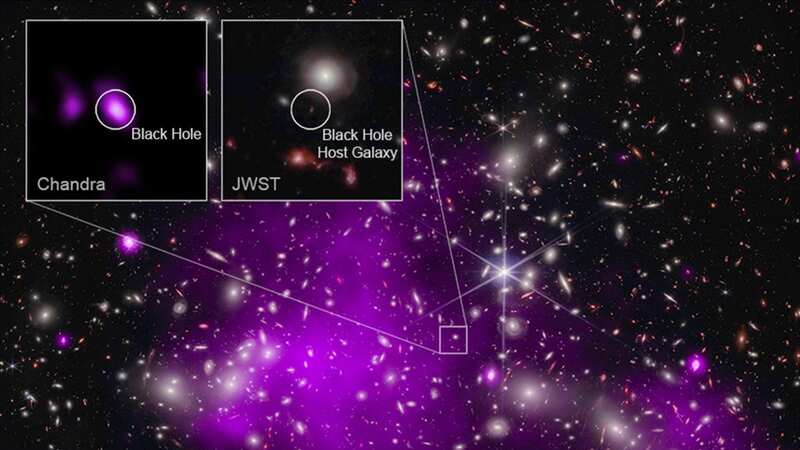Scientists have discovered the oldest black hole ever – and it's huge

The most ancient black hole yet observed has been revealed by Nasa scientists in a stunning image that suggests the massive beast was formed close to the dawn of the universe.
The research confirms what until now were theories that supermassive black holes existed close to the Big Bang. The findings come from the US space agency's James Webb Space Telescope and the Chandra X-Ray Observatory with scientists from both teaming up over the past year to make the observations.
The black hole is estimated to have formed a mere 470 million after the universe, which is 13.7 billion years old, making this black hole 13.2 billion years old. And researchers have found that this is no 'ordinary' black hole, but a massive 10 times bigger than the black hole in our own Milky Way.
Lead author of the report, Akos Bogdan of the Harvard-Smithsonian Centre for Astrophysics said it is believed to weigh anywhere from 10 per cent to 100 per cent the mass of all the stars in its galaxy – nowhere near the tiny ratio of the black holes in our Milky Way and other nearby galaxies which are estimated to be 0.1%.
And Yale University’s Priyamvada Natarajan, who took part in the study published in the journal Nature Astronomy, said: “It’s just really early on in the universe to be such a behemoth. It’s astounding how this thing actually is sitting in place already with its galaxy so early on in the universe.”
 'Weird' comet heading towards the sun could be from another solar system
'Weird' comet heading towards the sun could be from another solar system
Scientists claim that the black hole formed from colossal clouds of gas that collapsed in a galaxy next door to one with stars and when the two galaxies merged the black hole took over.
According to Natarajan, Chandra detected it via X-rays which confirms “without a doubt that it is a black hole.” She said: "With X-rays you’re actually capturing the gas that is being gravitationally pulled into the black hole, sped up and it starts glowing in the X-rays."
She explained that this one is considered a quasar since it’s actively growing and the gas is extremely bright. The Webb telescope alone may have spotted a black hole that is 29 million years older, according to scientists, but it’s yet to be observed in X-rays and verified. Natarajan expects more early black holes will be found — perhaps not as far out, but still quite distant. She said: “We are expecting a new window to open in the universe, and I think this is the first crack."
The two space telescopes — Webb and Chandra — used a technique called gravitational lensing to magnify the region of space where this galaxy, UHZ1, and its black hole are located. The telescopes used the light from a much closer cluster of galaxies, a mere 3.2 billion light-years from Earth, to magnify UHZ1 and its black hole much farther in the background. “It’s a pretty faint object, and thanks to like luck, nature has magnified it for us,” Natarajan said
Read more similar news:
Comments:
comments powered by Disqus
































